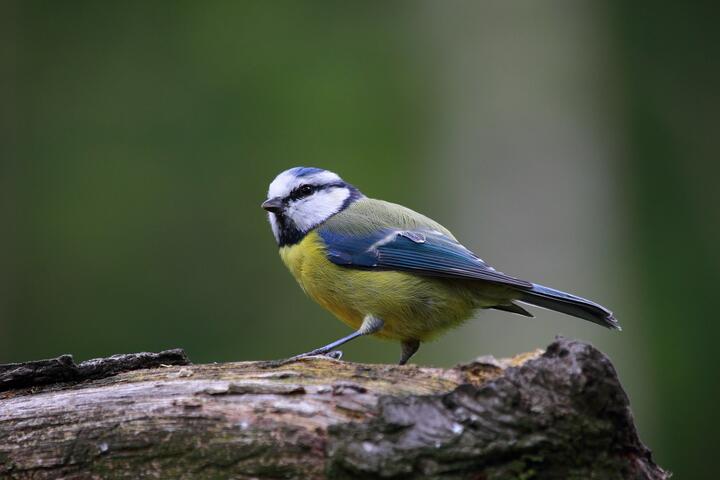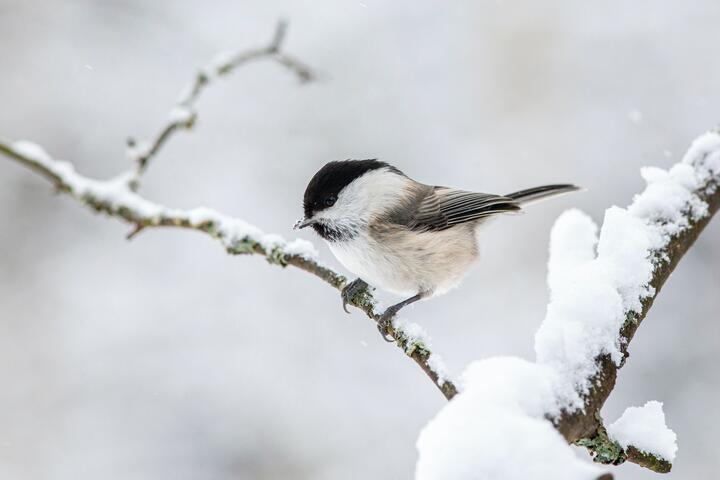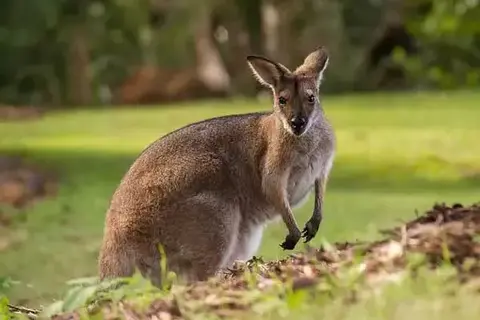50 Interesting Facts About Tits
Camilo WalkerPerhaps these are the most famous birds. Yellow breast, blackhead, and blue wings are easy to remember and recognize everywhere. The habitat of these representatives of the feathery family is huge and captures even North Africa. Even though the tit is not among the singing birds, it is quite voiceful. According to ornithologists, these birds can make about 40 sounds in a different tonality. There are other interesting facts about tits. There are 61 species of these birds. Earlier, they also included long-tailed and thick-tailed tits, but it turned out that they are not related. It is noteworthy, but these crumbs are very loyal creatures. The families created by tits usually do not disintegrate. And if one of the partners dies, the other is very hard to endure loneliness. We have collected for you the most interesting facts about tits.
Interesting facts about tits
 Photo by Pixabay on pexels
Photo by Pixabay on pexels1.Tits are some of the most necessary and useful birds for humans. Tits are small birds whose weight usually does not exceed 25 grams, and their body length is usually 150 millimeters.
2.Some people think that the bird got its name because of its blue plumage color, but tits rarely have this color in their plumage. In fact, the tit got its name because of the sounds it makes, if you listen carefully, you can hear the “siin-si”, hence the tit.
3.This bird inhabits not only our latitudes, it is distributed practically in all corners of the world. In nature, there are about 65 species of tits.
4.People knew about what a useful bird it is since ancient times. For example, the first information about the tit is found in the first legislative act on the protection of birds, in which in addition to it the list of useful inhabitants of the sky is also included starlings. The law dates back to the 13th century, wherein 1328 by order of Louis of Bavaria “a large fine for anyone who dares to kill a tit, the most diligent exterminator of insects” was established.
5.Among the most common species of tits are the following: great tit, hanging tit, whiskered tit, tufted tit, lawn tit, Moscow tit, downy tit.
6.The great tit is also called big tit or grasshopper. This species of tits is very beautiful. The back of this bird has a light green color with yellow shades, and its abdomen is colored yellow. The distinctive black of this bird is the black stripe that runs along the abdomen and breast. The top of the head, the sides of the neck, and the neck of this tit are painted black, which gives off a bluish sheen in the sunshine. The sides of the bluebird’s head are white. The wings of the barnacle are gray, sometimes with a blue tinge, and the tail is black.
7.The great tit is a very fast-moving bird. It likes to jump on branches and hang upside down on them. The great tit flies quite well, but to fly, it makes frequent flapping of its wings. Most often this bird can be seen in a flock with other tits.
8.It would seem that everything is unambiguous, a tit is an insectivorous bird exclusively, but there is one “but”. Scientists have proved that some species of tits sometimes prey on small non-bats (small bats). As a rule, they prey on them during the period when bats have not yet fully awakened from hibernation. After killing their prey, a great tit, for example, peck out its brain.
9.Tits are not migratory birds because they are not particularly sensitive to cold. Most of them are migratory birds because with the onset of cold they move out of forests closer to people. In wintertime food in the forests becomes scarce, so birds move to people in the hope to find something edible and thus provide themselves with a “nourished” winter.
10.Among the useful qualities of this bird should be noted an extensive range of foraging areas. It even feeds on such insects as silkworm and hawthorn caterpillars, while most birds do not eat these insects.
11.The Crested Tit, or Grenadier, as it is also called, is a beautiful and interesting bird. Its distinctive feature is its crested crest, which is impossible not to notice even from a distance. It’s not difficult to guess that this bird got its name precisely because of the presence of this crest. The entire back of the grenadier is painted in grayish, brownish color. The crest is colored with small black and white spots, the throat and sides of the neck have black spots. The abdomen of the tufted tit is white with a yellow tint.
12.tufted tit can also boast of its activity and restlessness. Most often it can be seen in the crown of trees, where the bird hides from prying eyes.
13.Most tits live in forests and forest belts because it is in such an area that they can feel safe and find food without problems in a favorable period of time.
14.Benefits from tits are enormous because these little nimble birds are real fighters with pests of gardens and orchards and their larvae.
15.It is impossible to imagine, but this small bird can fly out of the nest about 300 times in one day to find food for itself and its chicks.
16.The puffin is also called a gull and a wading tit. This bird does not have a bright attractive coloration. The back and head of this tit are colored black. The back and the whole upper part of the body are of light gray coloring, abdomen also has unattractive coloring in dirty white. The wings and tail are most often colored dark brown.
17.Nesting tits in early spring, at this time it is still quite cold and chilly, so their nests should be as warm and comfortable as possible for the future chicks. Also, these birds can nest in the middle of summer.
18.Most often these birds build nests in hollows in trees; much more seldom you may see a nest of tits between tree branches or in holes, cracks, holes in buildings at the height of 3-6 meters.
19.As a rule, nests are made of wool and feathers, also twigs, down, and moss, and if you are lucky to find them, absorbent cotton.
20.Tits are very sociable birds, very often they live very close to our homes, which is why this bird can often be seen at home, as a pet.
21.Long-tailed Tit, also called Appolonovka, is the smallest bird of all tits that live in our area. Despite being the smallest tit, the appolonovka boasts a very long and beautiful tail. The head and belly of the long-tailed tit are colored white, the sides of the bird have a subtle pink tint, the wings are mostly dark brown or black, and the stepped tail is brownish-black in color.
22.The Appolonovka differs from many other birds in that it can sing very beautifully. That is why bird breeders who want to teach other birds to sing take a long-tailed tit as a teacher for them.
23.Long-tailed Tit is very sociable and rarely very afraid of people, so it is very common to see such a bird living in someone’s home.
24.In wintertime, tits can be fed with cereals like millet and buckwheat. Cereals should be given in a raw form because made of cereals porridge in the cold will freeze and turn into icy lumps.
25.However, opinions are divided concerning millet. Some people think that millet is a great type of food for birds, while others are categorically against such food for birds because millet is very swollen in the stomach.
 Photo by Erik Karits on pexels
Photo by Erik Karits on pexels26.The blue tit is the most beautiful bird of the tit family. Blue tit has a very unusual bright coloring, which uniquely distinguishes it from other birds. The blue tit is a small bird whose plumage has a bright blue and yellow color. The beak and tail of the tit are relatively small, the blue tit itself reaches a length of 10-12 cm. The back part of the tit is colored greenish, but the shade may vary depending on the habitat of the bird. The belly of the bird is light green with a yellow tint. On the head of the Bluebird, there is a “cap” of azure color, on both sides of the beak there are two blue stripes, also there is a blue stripe around the neck. The wings and tail of the bird also have a bluish-blue color.
27.Blue tits are frisky active birds that like to jump from branch to branch, occasionally dangling head down from the branch. This tit is not very afraid of people, so it can often be seen near residential buildings. By nature, the blue tit doesn’t fly very well, but it can move very fast with the help of its legs. Also, this bird can be called curious because it likes to “stick its nose” into any crevice and hole in the tree.
28.Tits are insectivorous birds and in summer they feed on the following insects: invertebrates and their larvae; caterpillars of various butterflies; dragonflies, spiders, beetles, including weevils; midges, flies, mosquitoes, aphids, mites.
29.Ants and bees may also make up the diet of the bird.
30.Sometimes a tit may eat cockroaches, grasshoppers.
31.Very often whiskered tits can be met under the name of bearded or bearded tit because the adult male of the species has a white throat and black “beard”. The plumage of these birds has a very beautiful color of light brown, in some places with a yellowish tint. The head of the mustachioed tit is colored gray with a blue tint. A distinctive feature of the tail coloration of these birds (males) is that the tail feathers underneath have a white color.
32.The female of this tit has no “beard” and her head is colored in warm brown beige. The tail feathers underneath are not white, but beige, milky.
33.Young immature mustached tits have a coloration that is close to warm beige and yellow in color.
34.Beginning in the fall and including the winter, tits begin to eat mostly the following foods: hazelnuts, corn, wheat, oats grains, pine seeds, linden seeds, lilac, mountain ash, blueberries, and sunflowers.
35.The reason why a tit lives for a certain period of time in the forest is the need to reproduce.
36.The Cape penduline tit is the smallest member of the tit family because the length of its wings is only 45-55 mm. Unfortunately, this tit cannot boast of its coloring. The body of this bird is colored in yellowish-gray color, in some places giving it a greenish color; in general, such color looks rather unremarkable and unattractive.
37.Most often this bird can be seen in Southwest or South Africa.
38.The tit is a very quiet bird that always behaves neatly and silently. Despite this, it is very dexterous in its movements: it can very quickly and discreetly inspect tree branches and flowers, in which it looks for bugs to eat.
39.Such species of tits as the Blue tit and the Moscow tit take care of their food from the fall and stock up on necessary products – seeds, grains.
40.Other species of tits, on the other hand, most often feed on other people’s supplies, which they are very good at finding.
42.The mosquito can be found under the name black tit, little tit. This bird resembles the Bolshak with its coloring, but it is much smaller in size. The “cap” on its head is black, “cheeks” have white spots, its back is gray with a bluish tint, and its abdomen and thorax are light grays with a light red tint. The tail and wings are colored a dirty black.
43.The mosquito is a fidgety bird that will never sit long in one place. It flies fast and well, while searching for food it also hangs upside down by twigs.
44.Tits spend nights in winter in places where they feel warm and have the least wind. Various cavities, cracks in buildings, birdhouses are good places for these birds to sleep, and you can also see tits under the roofs of houses.
45.Most often birds sleep in flocks, close to each other because it is much warmer for them.
46.Tits are voracious; they eat almost continuously during the day, even if they aren’t hungry; they hunt to hide their prey, and then when they get hungry, eat it. It puts its prey in a secluded place – a hollow or a crevice.
47.The average species of tit destroy pests in a day as much as it weighs, which is about 360 caterpillars.
48.One feathered pair with a brood can protect up to 40 fruit trees, and during the nestling period, tits bring their prey up to 600 times daily.
49.The flight of tits is unlike any other flock flight. They very rarely exploit their wings, so they can stay in the air for quite a long time.
50.In nature, that is, in the woods, a tit can live a very short life. Approximately the bird lives from 1.5 to 3 years. There is 1 recorded case where a tit lived about 10 years.
51.Tits can also be fed with meat products in winter. Boiled lean unsalted meat and unsalted bacon will definitely make the tits happy, especially in the cold time, when they need nutritious food so much. Even though many people advise giving sausage to tits, you should refrain from this idea.
Did you like interesting facts about tits? Share it with your friends.
Facts About Tits
 Photo by Erik Karits on pexels
Photo by Erik Karits on pexelsDid you know that tit is one of the most abundant birds in the world? As a member of the tit family, the great tit can be found throughout Europe, the Middle East, Central Asia, and east Palearctic. It can also be found in the Amur River region. The bird’s appearance has also been compared to a robin. Learn more about the great tit by reading some interesting tit facts below.
Great tits are incredibly intelligent. Through trial and error, they can solve difficult problems. They are known to use conifer needles to extract insect larvae from tree bark. They have also been observed using pine needles to retrieve larvae from the ground. The fact that tits can learn from others is fascinating and shows the diversity of these tiny animals. Hopefully, you will learn something new about the tit this time!
The great tit can be found throughout the Philippines and Great Britain. It is also known as the Pardaliparus elegans. Its habitat is vast, but little is known about its life and reproduction. Fortunately, the population is growing in its natural habitat. You can learn more about the tit’s amazing intelligence by browsing our website. You will discover that tit facts can help you to better understand this magnificent creature.
The greatest tit is one of the most intelligent birds in the world. Through insight and trial and error, it has mastered a number of unique skills. The Great tit learned to break open milk bottles to get the cream and has even been known to use pine needles to remove the larvae from trees. The tit has an incredible repertoire of songs and calls. While we may not understand how these birds can do such things, it is wonderful animal to learn about.
The greatest tit’s intelligence has been studied for many years. Insight learning has enabled them to solve problems by observing other animals. They have also been observed to learn how to open milk bottles using their sharp claws. This is a remarkable feat that has led to their spread across the globe. It is now a common sight in the Philippines. Its population is growing at an alarming rate, but scientists have yet to discover why they are so unique.
The elegant tit is known for its sweet voice and is a very sociable species. The tit is found in the Philippines, where it has no natural enemies. The tit’s songs are often heard in the Philippines and its nest is built between February and March. An adult female long-tailed tit lays up to 12 eggs, which hatch in thirteen to seventeen days. While these eggs may seem small, they can grow to be quite large.
Although the great tit is primarily a predator, it is still a monogamous breeder. During the breeding season, it feeds on seeds and other large foods, including insects. In winter, the female tit feeds on caterpillars and other invertebrates. During their breeding season, they eat mostly invertebrates and fruit. It also eats a variety of invertebrates, including grasshoppers.
During the winter, tit facts include: they feed on seeds and invertebrates. In the breeding season, they eat caterpillars and invertebrates. Their bills change shape to accommodate different kinds of food. It is a very curious bird, and they often peck windows. It is not uncommon to see them chasing flies and invertebrates. It is very common in North America.
Like most tit species, the elegant tit is a native of the Philippines and does not live in other countries. Its plumage is characterized by blue and black, and it does not migrate much. During the breeding season, tit feeds on seeds and nuts. However, when it is in season, it is also predated heavily by cats. Those that survive until January fatten up for breeding season are known to have very good hearing.
The great tit is the smallest of birds in the world. It has a yellow body and a duller yellow underbelly. Both sexes have four different types of songs, which makes them extremely thermogenic. The songs of great tit are often accompanied by the solitary males in a group. They are the only species that uses the tit language in its territory. During the cold, they only make three calls a day.
- LivestockInteresting Facts About Donkeys

- BirdsCan Pelicans Fly?By Noah Young

- WildlifeFun Facts About A WallabyBy Evelyn Star

- WildlifeTypes Of Lemurs In MadagascarBy Murphy Scott

- WildlifeHow Is Orangutan Strength And Dangerous?By Khai Dove

- BirdsPigeons’ Ability To Find Their Way HomeBy Noah Young

- DogsRules For Feeding Your PuppyBy Karla Miller

- BirdsWhat Is The Life Expectancy Of A Parrot?By Nolan Foster

- Birds7 Interesting Facts About SwansBy Charlotte Green

- Birds50 Interesting And Surprising Facts About DovesBy Evelyn Star
